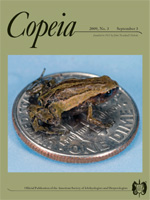The high densities of freshwater turtles, along with their longevities and tendencies toward omnivory, can make them critical influences on the energy flow in lakes and the resilience of lake food webs. Despite this potential importance, there is little understanding of whether turtle abundances are driven by bottom-up (productivity) or top-down (predation) vectors. In this study I examined the environmental correlates of abundance of three dominant turtle species in 17 northern Florida lakes that span a gradient in primary productivity. I examined the associations between the abundances of the Yellow-Bellied Slider (Trachemys scripta), Florida Cooter (Pseudemys floridana), and Florida Softshell Turtle (Apalone ferox) and 18 environmental factors that varied either discretely or continuously across the lakes. Mantel analyses revealed significant associations between abundance of T. scripta, P. floridana, and A. ferox and periphyton and presence of mud and muck substrates, revealing a significant bottom-up influence. However, abundances were also associated with the presence or absence of alligators, important predators of turtles, indicating a significant top-down influence. The abundances of P. floridana and A. ferox were correlated with additional factors that suggest a role for specific dietary items and trophic position. The results indicate that both bottom-up and top-down controls are important limiting factors to turtle populations and implicate turtles as critical elements in the structure and, perhaps, the stability, of food webs in southeastern lakes.
How to translate text using browser tools
3 September 2009
Environmental Correlates of the Abundances of Three Species of Freshwater Turtles in Lakes of Northern Florida
Matthew J. Aresco
ACCESS THE FULL ARTICLE

Copeia
Vol. 2009 • No. 3
September 2009
Vol. 2009 • No. 3
September 2009




